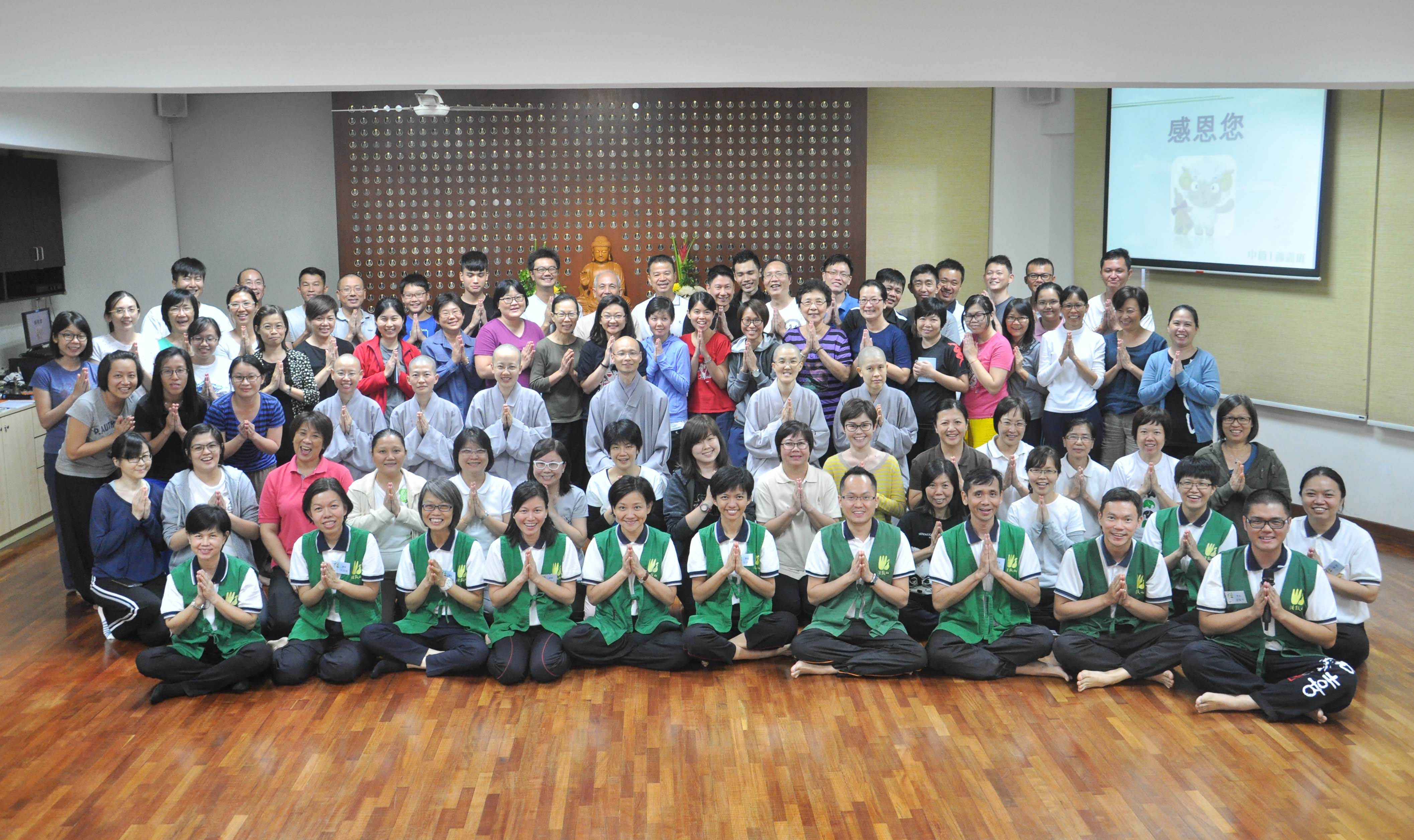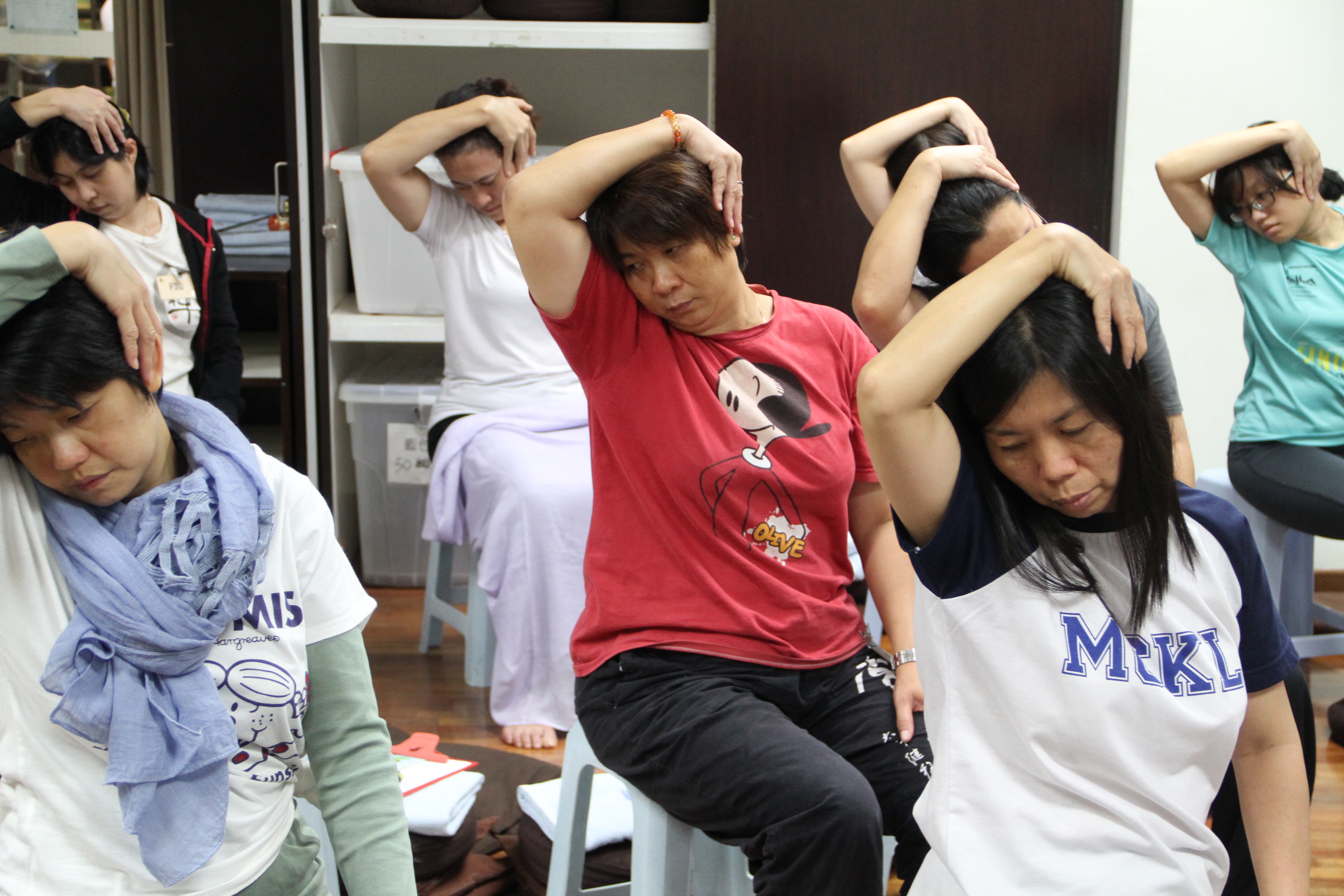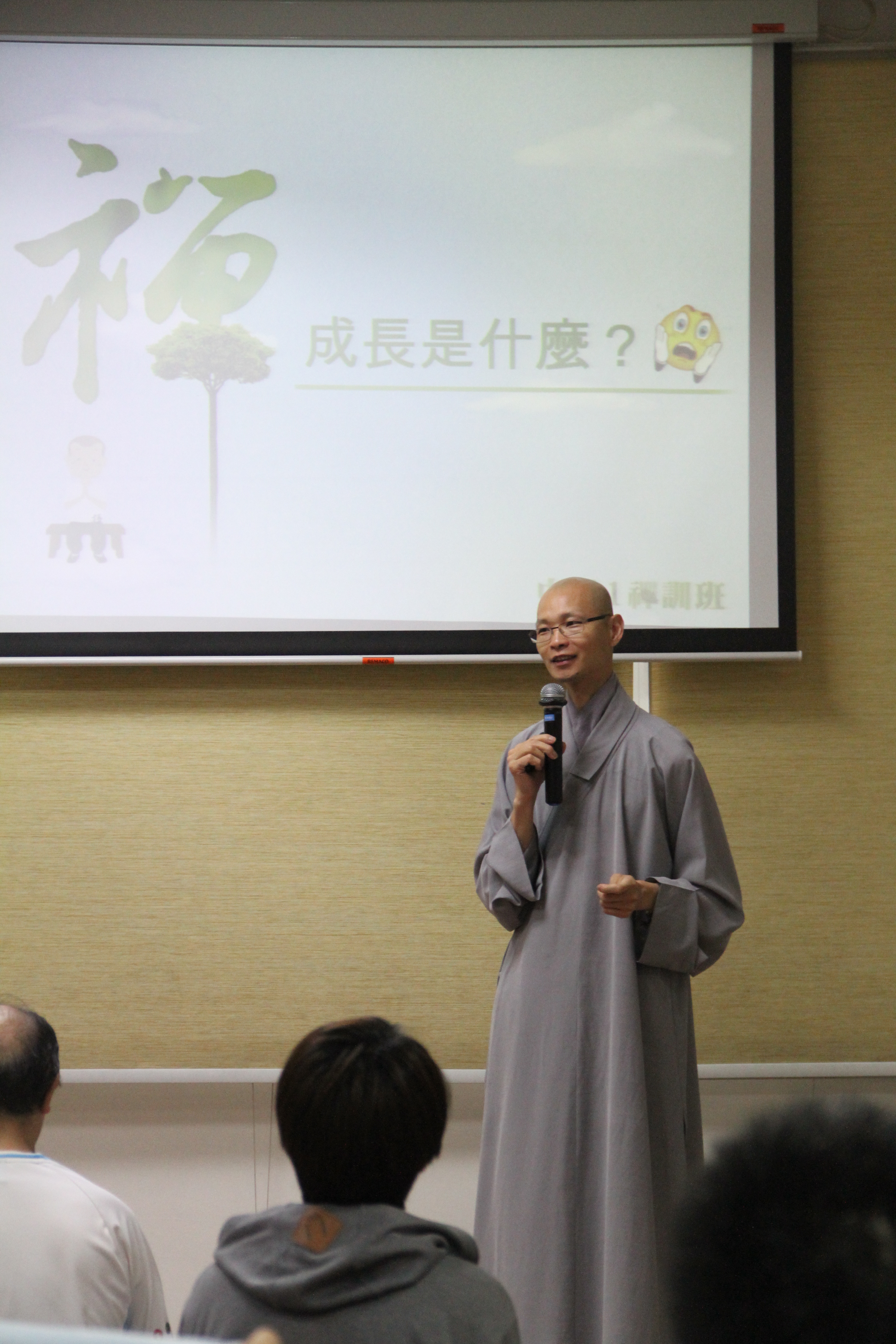Intermediate Chan Meditation Course in Malaysia

Dharma Drum Mountain Buddhist Centre Malaysia invited Ven. Chang-Yuan, director of Dharma Drum Mountain’s Meditation Activity Department in Taiwan, to lead an intermediate Chan meditation course at the Centre on October 29 and 30, 2016. The venerable used metaphors to show participants how to practice Chan in daily life, helping them gain a deeper understanding and experience of Chan practice.
As an overall guidance for this two-day Chan practice event, the venerable explained the ultimate goal of Chan practice and how to deal with obstacles for mediation, such as drowsiness, wandering thoughts, and ache. Participants also listened to Master Sheng Yen’s video talk on the Dharma Drum lineage of Chan Buddhism. As the venerable pointed out, Chan practice is actually easy and simple as long as we can constantly return to the methods and firmly raise our reflective awareness at every moment of our lives.
The venerable firstly explained why there are meditation training courses for beginners and intermediate level. In fact, Chan does not make differentiation of levels, although there are different types of people. The methods of practice may be flexible, but the goal is the same. People’s spiritual capacities and tendencies are different, and therefore there are diverse ways to accommodate their learning needs, to help them achieve the same goal of developing their inner wisdom and compassion by dissolving the self. We should use a gentle mind to deal with our “three poisons”—greed, hatred, and ignorance—and generate the mind of shame and gratitude to harmonize our minds, and thereby achieving perfect wisdom, leaving suffering behind and attaining true happiness. In addition, Chan practice requires patient diligence and a quiet body and mind, to keep a relaxed body-mind and a stable emotion, leading to a unified body and mind and an enlightened insight.

To enhance diligence and relaxation of the body and mind, practitioners can start with their daily activities by adjusting their eating habits, sleeping patterns, body movements, breath, and mind. In harmonizing the eating, it is advisable to eat in moderation. Before eating the food, we can contemplate its colors and smell to generate our gratitude. Learn to relax the body while eating, and eat with mindfulness, which will help us develop a calm and peaceful mind. Sleep enough hours and have quality sleep, and it is recommended to take naps during the day, practicing lying meditation and relaxation in shavasana.
In our daily life, we should walk, stand, sit, and lie down in correct posture while remaining relaxed, a principle that requires us to “put our mind where our body is, be clearly aware of relaxation, and relax our whole body and mind.” We practice relaxation by being clearly aware of our actions, and practice calming our mind without being affected by our bodily sensations. This can train us to gradually develop a clear mind, and the Eight-form Moving Meditation is exactly a practice we can use in our daily life for harmonizing our body.
To harmonize the breath, the practice of counting the breath helps us feel peaceful, reduce wandering thoughts, and quickly calm our mind by being clearly aware of the object of consciousness—the tip of our nose—while counting the breath. Gradually, we can let go of the counting and naturally start following the breath. As there are four kinds of breathing—nasal breathing, abdominal breathing, embryonic breathing, and turtle breathing—we can only experience this process in its natural course and should not imagine it, let alone becoming too ambitious in seeking it.

Through the first five phases of practice for harmonizing the mind, we can come to know ourselves, grow ourselves, affirm ourselves, and eventually dissolve ourselves. By mastering the methods, we can progressively eliminate our negative habits.
The venerable also mentioned the requirements for Buddhist practice: faith, aspiration, the mind of shame, determination, and the mind of letting go craving. To practice Chan is to be with ourselves at all times, by being present with our bodily sensations while relaxing our mind and keeping a clear awareness, thereby having a calm and peaceful body and mind. We should learn to develop into a habit of practicing Chan, realizing the meaning and value of our life. We should also learn to be alone, reining in our wandering thoughts and taming our minds by using the methods, thereby ultimately eradicating our afflictions.
Under the venerable’s attentive guidance, participants of this two-day course have gained a profound experience of Chan practice.
Report: Yao Feng-wei (姚鳳瑋)
Photography: Lee Jin-cheng, Fang Ying-zhang (李錦成、方迎璋)
Translation Adviser: Huang Kate Wan-chi (黃婉琪)
English Editor: Chang Chiacheng (張家誠)
